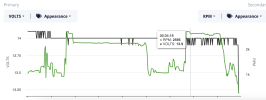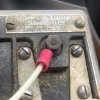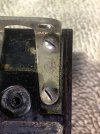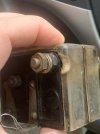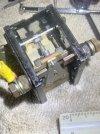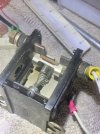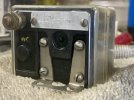No joy. About half the voltage drop was the alternator field, but there's still 0.2V or so unaccounted for. Maybe I'm barking up the wrong tree and/or at the point of diminishing returns.
Nah, I am very similar, I need to have an explanation for everything, you're very detailed, as one should be as a plane owner obviously, from all the detail you shared it starts to feel you have a battery that is getting tired.
Note btw that OC (open circuit) voltage is always higher then when on load. To test a battery (of whatever kind really) you want to measure the voltage when it experience some (reasonable) load.
A(ny) battery that is getting old(er) would exhibit increased internal resistance, while a volt meter by nature has a very high resistance, you don't really see that effect. As you don't see the voltage drop over the internal resistance.
How old is your battery? And are you at times in a cold(ish) climitate? Is it a wet or dry battery?
For comparison, I had to change my Concorde XC after 5 years, this apparently is "normal" (ugh, another $500), but yeah had the same thing with starter cranking I dropped to 10.5V at the time, in the winter.
If you're FBO has a "starter pack" maybe you can do that test with that on your battery, if you see something readings you'd expect, it is likely your battery is suggesting time for replacement.
xander

